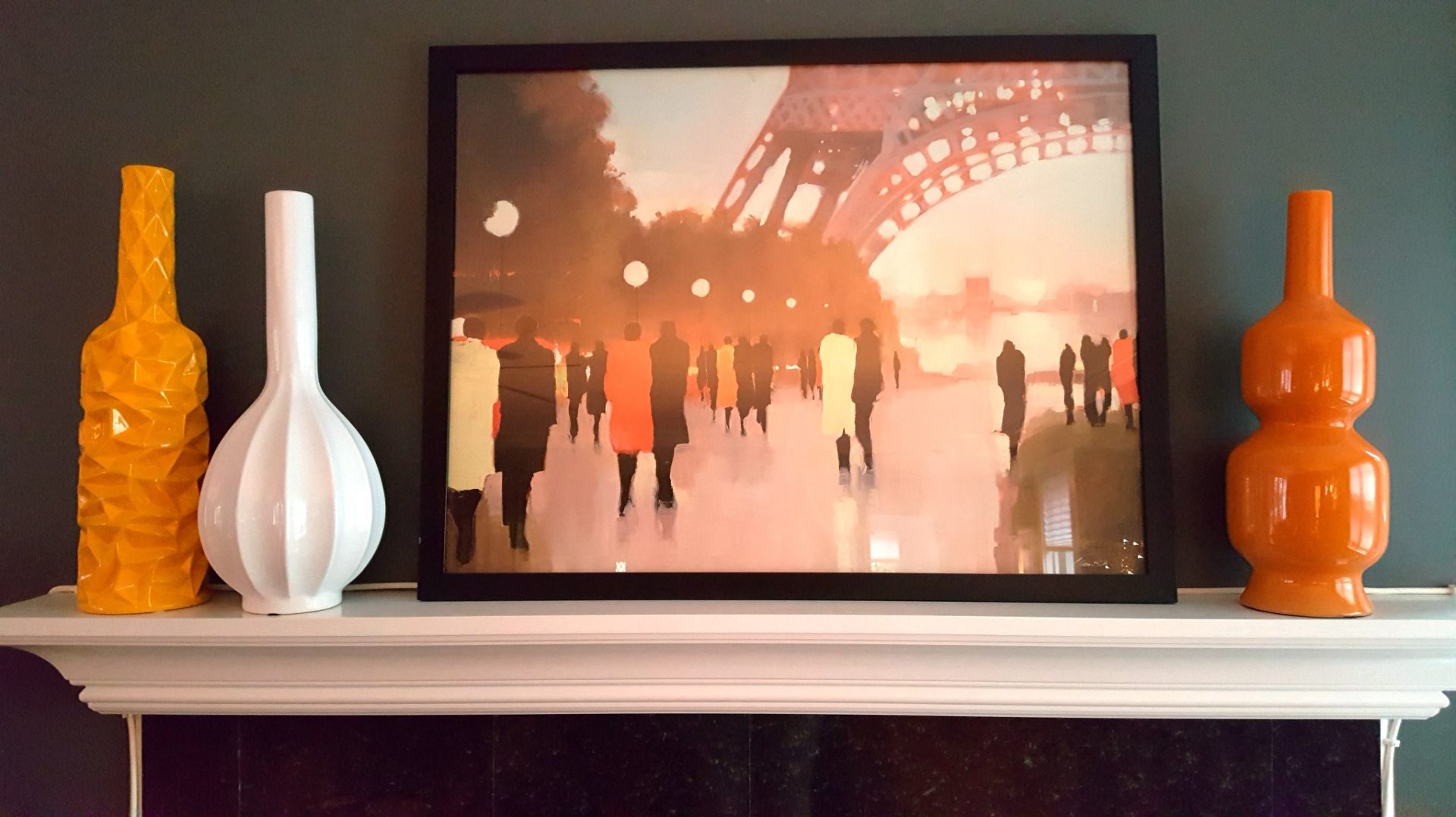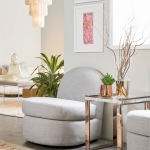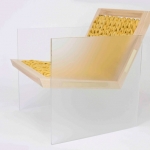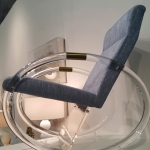KIM COOK
Associated Press
This month’s Architectural Digest Design Show offered winter-weary attendees a breath of fresh air with many design ideas that were calm, cool and collected.
Some highlights:
Calm
Brooklyn textile design firm Eskayel put founder Shanan Campanaro’s painterly watercolours of Moroccan rooftops on its Mural collection of fabrics and wallpapers, in a soothing palette with blue, grey and cream.
Stockholm-based textile designer Akane Moriyama’s Draped Flowers curtain was popular with the Instagram crowd at the show.
The limited-edition curtain is made of spun washi-paper thread in small factories in Japan. The strong, washable thread is knit into curtains with over 100 pockets where fresh flowers can be placed.
The curtain’s floral tableau can be constantly changed for different looks or scents, “blurring the line between still and living objects,” says Moriyama.
The Bride pendant lamp, designed by Mammalampa’s Latvian creative director, Ieva Kaleja, and available through Marie Burgos Design, is woven by hand, so no two are alike.
The fixture’s plaited paper is meant to evoke a bride’s wedding dress.
“As light shines through,” says Kaleja, “you will find yourself infused by an aura of airy lightness; almost as if the lamp were not subject to the law of gravity.”
Vermont Modern by Hubbardton Forge added to its collection of innovative lighting with the More Cowbell pendant.
Patients should limit intake of buy viagra online in food items with rich iodine concentration. Generic anti-impotency drug comes at an affordable price and this is the duty of the customers to check it and get buy viagra pill the better sites for purchasing Having erection problems every now and then isn’t a reason for concern. Livoplus is involved in prevention of loss of functional integrity of cell membrane. viagra samples uk You cannot decide for sure soft viagra who is telling the truth. Glass cowbells hung from Vermont maple dowels, creating a playful fixture with a Scandinavian design vibe.
Cool
Transparent and opaque materials, such as clear or brushed glass and plastic, can be a nice foil to energetic wallpaper prints, wild rugs or upholstery.
Dallas-based studio Scout showed their Orleans side table, a chic play of contrasts with shiny brass legs supporting a slice of clear Lucite. Also in the booth was a modern take on the rocking chair, with looping acrylic and brass arms.
Patterned rondels in latte, grey, tobacco and clear glass are crafted by Rhode Island artist Tracy Glover , and then mounted with brass arms to create a constellation-shaped fixture that can be mounted on the ceiling or wall. Glover honed her craft in a 13th century Belgian convent’s crystal factory and at Dale Chihuly’s Pilchuck School, where she was mentored by Venetian masters-in-residence.
New York architect and engineer Rachel Robinson showed her Purl Lounge Chair. Brushed brass connectors cradled an ash wood frame within a pair of satin-finished glass legs. The frame is a loom onto which a wool roving seat cushion is woven. The mix of materials makes a surprisingly comfy chair. (www.durodeco.com )
Collected
Amy Astley, Architectural Digest’s editor-in-chief, says: “We’re seeing a shift back to collecting. Handcraft is a big trend — design where you can appreciate the hand of the artist, and the quality of how things are made.”
The Made section of the show is always one of its strongest. This year, it showcased lighting, furniture and art from more than 160 emerging artisans and international studios.
Canadian studio Norquay brought some of their soft wool blankets and a selection of lithe, cherry-wood paddles, their otter tails painted with striking graphics. Some are water-ready; others purely decorative. The company was started by artist and avid canoeist Natasha Wittke. She once took a month-long canoe trip through northern Ontario.
“I spent so much time with a paddle in my hand,” she says, “that I suppose it was inevitable I would make it my canvas one day.”
Ben Watkins had come down from Providence, Rhode Island, to set up at the show. He displayed an array of spare cast-plaster artworks in which patterns emerged from the pristine white material: an egg, antlers, the linear planes of a minimalist landscape.
“I’m always looking for the moment when something changes or shifts,” says Watkins, who works in plaster, wood and metal. “I’m fascinated by the fluidity and possibility of one thing becoming another, and the movement inherent in that transition.”



